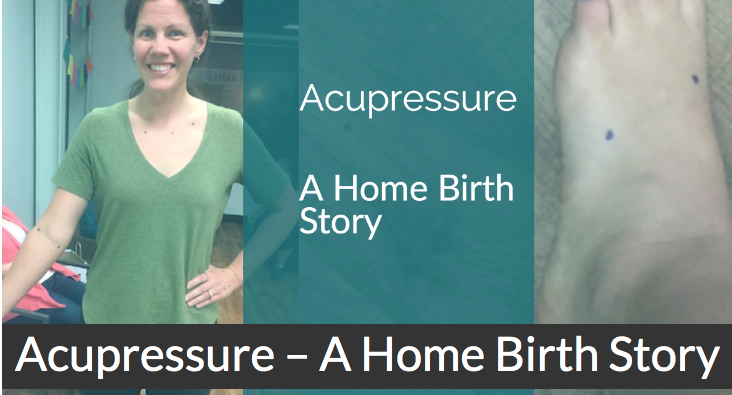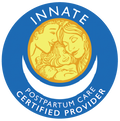|
Recently, I had an opportunity to attend an acupressure workshop for birth workers. I was on the fence originally, as I had missed the early registration deadline and had already been away from my family attending another training for five days not so long before this, but something kept nudging me to go. When I read all the information, saw the fee was 100% refundable if the workshop was missed for a birth (this is HUGE for midwives), it was local (equally as important when clients are in range to deliver), and my husband encouraged me to go knowing it would help me and my clients (this helped alleviate “mom guilt”), I was IN!
The workshop itself was informative, and I loved that we were hands-on practicing right then and there. My only issue is that I wasn’t experiencing any of the ailments the day of the workshop that we were learning, except for a neck issue from my car accident back in June. That being said, I have to be honest, I’m a bit of a skeptic by nature; so, without experiencing first-hand drastic relief or improvement, I wasn’t sure what I’d actually walk away with. I was appreciative for the presentation and for the documents provided so that we could practice and use as indicated for ourselves and our clients. It was probably about a week following the workshop that my next client went into labor. This would be her second child, and first out-of-hospital birth. She was about 6cm dilated when I arrived but I wasn’t loving how the baby’s head was applied against the cervix. That’s when I decided to give my new tool a try. Fortunately, in preparation for the birth, I had scanned in the handouts to be accessed from my phone. I scrolled through to find the points that were most indicated for a posterior or asynclitic baby (fancy term that basically means the head is cocked funny or not well tucked-chin to chest). We had already gotten mom’s vitals and listened to baby, and since everyone was doing really well, we proceeded with a circuit of 3 positions for mom while dad supported, and we held some acupressure points. She started out on her hands and knees, which on its own is a fantastic position for helping baby’s position, for 10 minutes, then got onto her bed and did four contractions lying on her left side and four contractions lying on her right side (the opposite leg is bent and supported with a pillow folded just in front of mom’s belly/baby). Afterwards she got up to use the restroom while I charted a couple things and told her she can do anything that seemed comfortable and encouraged her to listen to her body. Literally within minutes her contraction pattern intensified. (Note: a less than ideal presentation can cause ineffective contractions or longer labors.) She decided to get into a warm bath for comfort and just changed positions as she desired, mostly kneeling. At this point, we were helping with her comfort, hydration, and listening to baby’s heart rate as she navigated transition. I could tell something had changed and asked what she was feeling with the contractions now. She no longer felt the pain above her pubic bone, she just said it was different and had more pressure. Deciding to empty her bladder one more time, she was helped out of the tub and onto the toilet. It was in this position that she realized how low baby was, that this was happening now, and that she had the sensation to bear down with the next contraction. She declined the offer to be helped back into the bathtub, so we readied ourselves and supplies to do the delivery where she was. With her first push, the tight and bulging bag of water was visible, and minutes later she was holding her daughter in her arms with the most incredible look of amazement and disbelief on her face. In total, it had been about two hours from the start of the acupressure points and positioning circuit to the time she had birthed her daughter! While I obviously couldn’t promise the same timing and speed for everyone, to me it is evidence that it worked! Most notable to me was the obvious shift that took place in the contractions after our attempt to use the acupressure and positioning to help move baby into a more optimal position for labor and birth. I realize it won’t always be a necessary tool for each birth, but I am thrilled to add it to my toolkit
0 Comments
Leave a Reply. |
Melissa BatesExperience The Birth You've Always Imagined Archives
February 2020
Categories |
Location |
|
Copyright 2021 | My Radiant Beginnings LLC Website Designed With Love By The Creative Agency


 RSS Feed
RSS Feed
